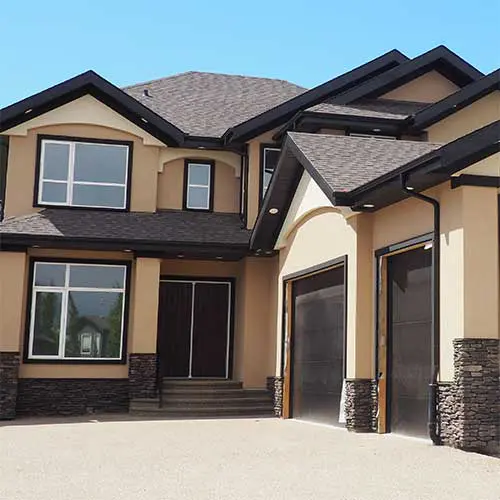
What Is Best for Stucco Repair?
Introduction
Stucco has long been a favored exterior finish for homes and buildings, thanks to its durability, versatility, and aesthetic appeal. However, whether due to weathering, age, or improper installation, stucco can suffer from cracks and damage over time. If you're faced with a stucco issue, you may find yourself asking: What is best for stucco repair? In this comprehensive guide, we’ll explore various methods of stucco repair, offer expert advice on materials and techniques, and help you determine the best solutions tailored to your specific needs.
What Is Best for Stucco Repair?
When it comes to repairing stucco, there are several options available. The choice largely depends on the extent of the damage, the type of stucco system installed (traditional vs. EIFS), and your budget.

Understanding Different Types of Stucco
Traditional Stucco vs. EIFS
- Traditional Stucco: Made from a mixture of cement, sand, and lime, traditional stucco is applied in three coats over a lath surface.
- EIFS (Exterior Insulation and Finish System): This modern approach includes insulation boards covered with a base coat and finish coat.
Understanding which type you have is crucial when considering repair methods.

Common Causes of Stucco Damage
Cracks and damage can occur due to various factors:
- Moisture Intrusion
- Temperature Changes
- Improper Installation
- Structural Movement
Identifying these causes will help prevent future issues.
Types of Stucco Repairs
Minor Repairs: Filling Cracks and Holes
For small cracks or holes in your stucco:
Materials Required:
- Stucco patch
- Putty knife
- Primer (if necessary)
Moderate Repairs: Patching Larger Areas
For more significant damage:
Tools Needed:
- Trowel
- Mixing bucket
- Spray bottle (for misting)
Extensive Repairs: Full Replacement
If your stucco is severely compromised:
Time Frame for Repairs:
Depending on severity:
- Minor repairs: A few hours
- Moderate repairs: 1–2 days
- Full replacement: 3–5 days
Choosing the Right Materials for Your Repair
Best Patch Products for Minor Repairs
Some top-rated products include:
| Product Name | Type | Features | |----------------------|-------------------|--------------------------------| | Quikrete Stucco Patch| Cement-based | Quick-drying | | Sakrete Fast Set | Polymer-modified | Flexible | | Dryvit FlexiPatch | EIFS-specific | Textured finish |
Top Tools for Effective Application
Investing in the right tools will make your job easier:
Best Practices in Stucco Repair Techniques
Preparation Steps Before Repairing
Before diving into repairs:
Applying New Stucco Like a Pro
When applying new stucco:
Professional Help vs DIY Approach in Stucco Repair
When to Call Professionals?
While many repairs can be done independently:
- Extensive damage warrants professional intervention.
- If you’re unsure about material types or techniques.
Searching for “EIFS stucco repair near me” could yield local experts ready to assist!

Benefits of Hiring Experts
Pros include:
Cost Considerations in Stucco Repair Projects
Estimating Costs Based on Damage Severity
Costs can vary significantly based on several factors including:
| Damage Severity | Estimated Cost Range | |-------------------|-----------------------| | Minor Cracks | $100 - $300 | | Moderate Damage | $300 - $800 | | Extensive Issues | $800+ |
DIY vs Professional Costs
The cost comparison often boils down to labor versus materials if you decide to go DIY versus hiring professionals.
FAQs About Stucco Repair
1. What Is Best for Stucco Repair?
The best option involves assessing damage severity first—light cracks may only need patching while extensive damage might require full replacement.
2. How Long Does It Take to Repair Stucco?
Minor repairs can take just hours; moderate repairs may last one or two days; full replacements generally stretch across several days.
3. Can I Paint Over Damaged Stucco?
Yes! After repairing any https://dependexteriors.com/stucco-contractor-strathcona-county-alberta/ damages properly, you can paint over it using quality exterior paint designed specifically for masonry surfaces.
4. How Do I Know If My Stucco Needs Repair?
Look out for visible cracks, bulging areas, or moisture-related stains that may indicate underlying issues requiring attention.
5. Why Choose EIFS Over Traditional Stucco?
EIFS offers better insulation properties compared to traditional methods but requires careful installation to prevent moisture issues.
6. How Can I Prevent Future Damage?
Regular maintenance checks combined with routine sealing or painting can prevent most issues related to wear-and-tear over time.
Conclusion
In conclusion, understanding what is best for stucco repair hinges largely upon knowing the type of system you have installed as well as recognizing the extent of any damages present before determining your course of action—be it minor patchwork or extensive replacements requiring professional expertise! With this guide at hand, you're now equipped with valuable insights that will empower you throughout your repair journey! Whether opting for DIY projects or enlisting local pros via “EIFS stucco repair near me,” may your home’s exterior shine brightly once more!